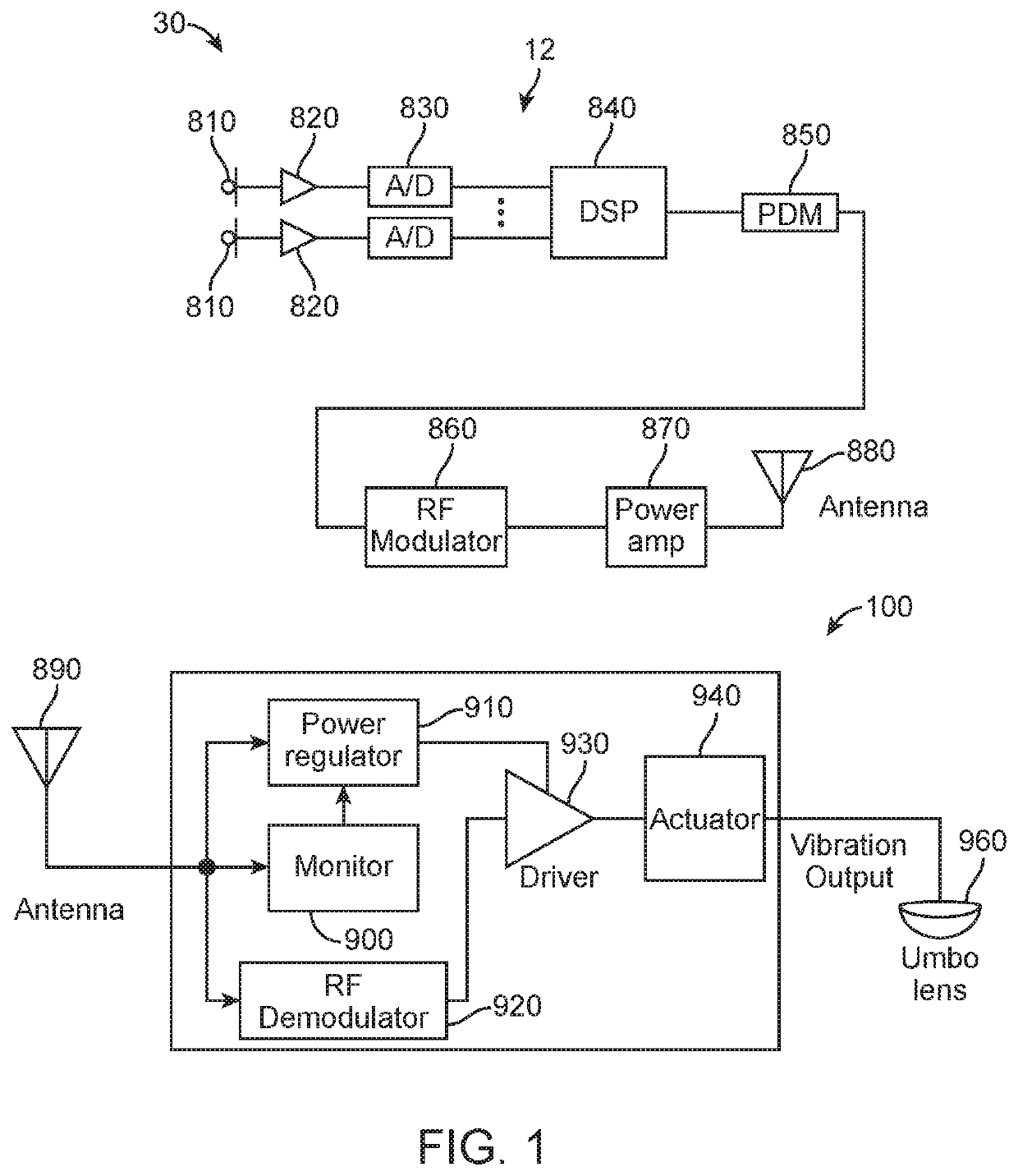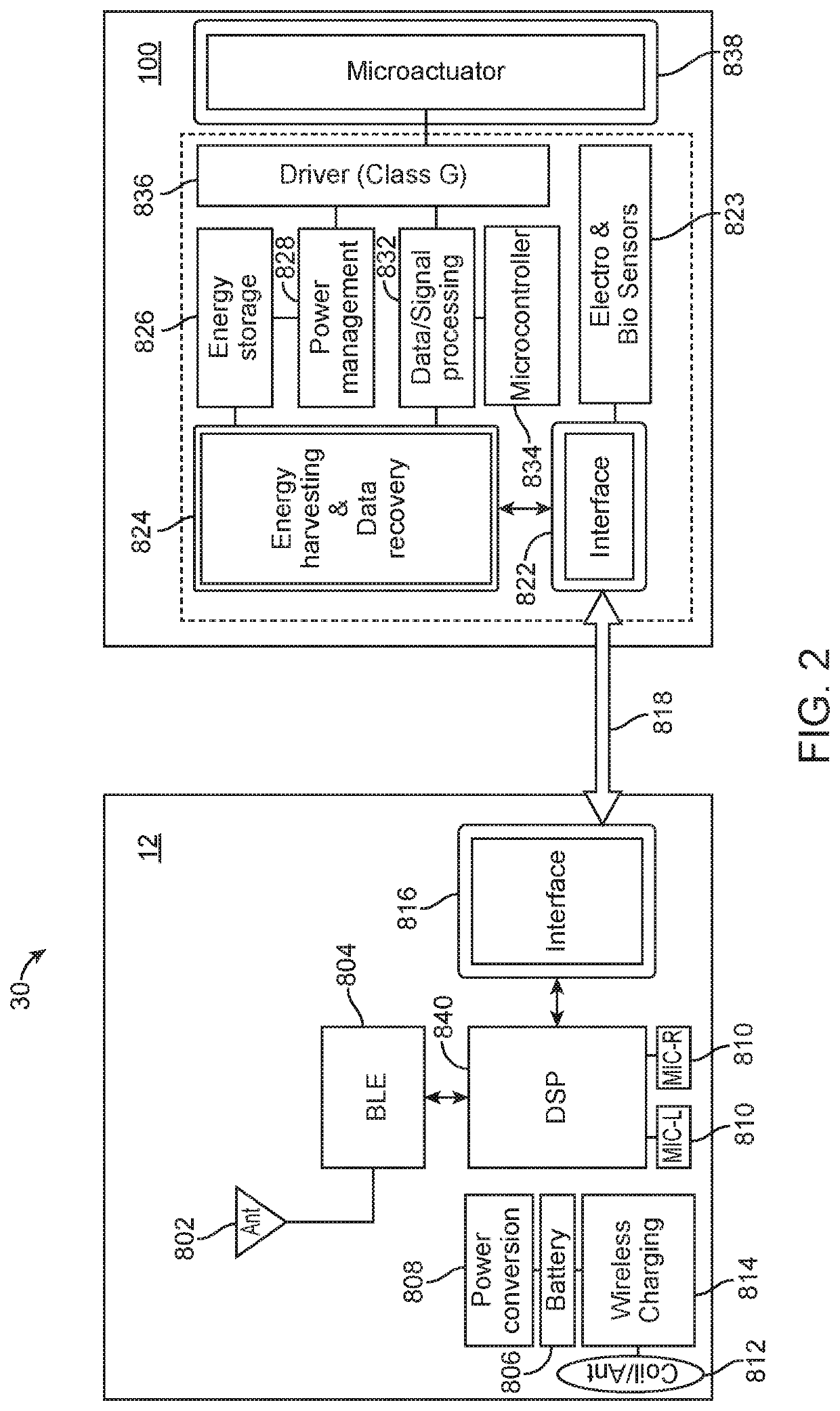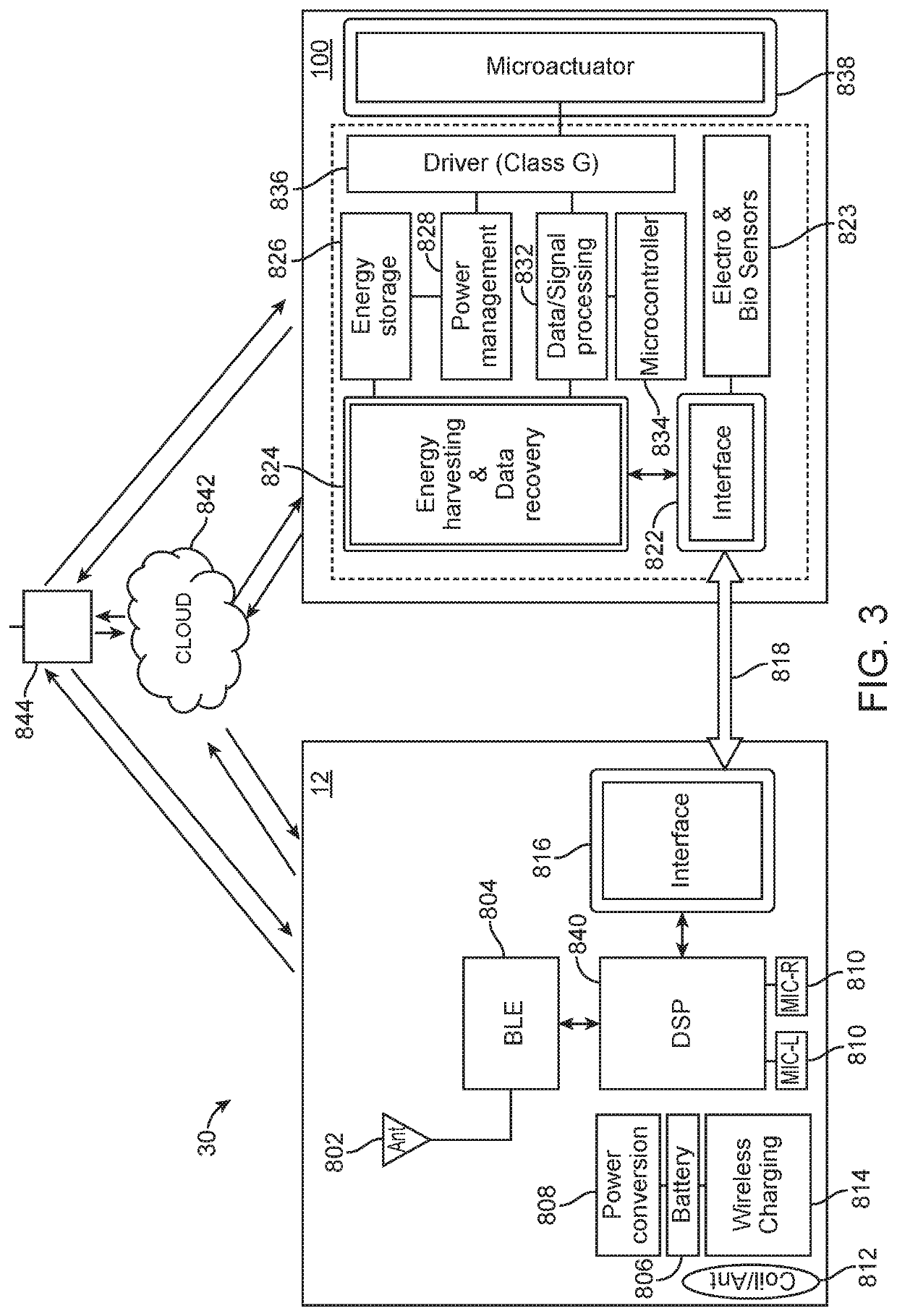Contact hearing systems, apparatus and methods
a technology of contact hearing aids and hearing aids, which is applied in the field of contact hearing aid systems, can solve the problems of shortening the battery life or the need for a larger battery, affecting the hearing aid wearer's hearing, and consuming a significant amount of energy in the transmitted signal,
- Summary
- Abstract
- Description
- Claims
- Application Information
AI Technical Summary
Benefits of technology
Problems solved by technology
Method used
Image
Examples
Embodiment Construction
[0021]FIG. 1 is a block diagram of a smartlens system 30 according to one embodiment of the present invention, including lateral ear canal assembly 12 (which may also be referred to as a light tip or eartip in some embodiments) and medial ear canal assembly 100 (which may also be referred to as a tympanic lens or tympanic lens transducer in some embodiments).
[0022]In the embodiment of FIG. 1, lateral ear canal assembly 12 includes a plurality of microphones 810 which are connected through pre-amplifiers 820 to analog to digital (A to D) converters 830. Analog to digital converters 830 may be connected to digital signal processor 840. The output of digital signal processor 840 may be connected to a circuit for modulating the output, such as, for example, pulse density modulator 850. In the embodiment of the invention, the output of pulse density modulator 850 may be connected to radio frequency (RF) modulator 860. The output of RF modulator 860 may be connected to power amplifier 870...
PUM
 Login to View More
Login to View More Abstract
Description
Claims
Application Information
 Login to View More
Login to View More - R&D
- Intellectual Property
- Life Sciences
- Materials
- Tech Scout
- Unparalleled Data Quality
- Higher Quality Content
- 60% Fewer Hallucinations
Browse by: Latest US Patents, China's latest patents, Technical Efficacy Thesaurus, Application Domain, Technology Topic, Popular Technical Reports.
© 2025 PatSnap. All rights reserved.Legal|Privacy policy|Modern Slavery Act Transparency Statement|Sitemap|About US| Contact US: help@patsnap.com



